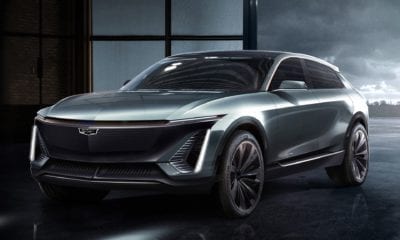Cars
Going Electric: Musk launches his first Truck in LA

The vision of Elon Musk has always been for his company ‘Tesla’ to be more than a car company. Musk has wanted to shift the world to using sustainable energy, like electricity generated by the sun which can then power a range of vehicles, from cars to busses, and even, heavy trucks, including the gigantic 18 wheelers.
Musk has been planning to release a line of trucks for a while. He made a Master Plan, Part Deux, which is a mission statement for Tesla he had published in July 2016, in which he said that he wanted to widen the line of electric vehicle products to include all major segments. First part of this mission will take place tonight, on November 17, 2017, when Musk will reveal his all-electric semi-truck at 8pm in LA.
In a post on Instagram, Musk jokingly said that his truck will transform into a giant robot, fight aliens (like Transformers), and last but not least, make latte. Musk will probably design the truck to be 100% battery powered, with lithium ion cells laid along the floor, same as with Tesla’s cars. This keeps the centre of gravity low, and also helps with handling issues. This kind of thing is very important in a vehicle having a high side that has to drive through strong cross winds which might cause it to overturn.
Tesla has always focused largely on aerodynamics, and Musk has cited the physics of air resistance very often. The air resistance increases with the square of speed. That is why overpowering the air resistance is a huge power drain for a vehicle. Even a sleek car like Tesla’s, employs retracting door handles to make the vehicle as slippery as possible and cut through the air barrier at high speed. A Tesla truck will definitely employ the latest aerodynamic technology uncovered by Tesla itself. We can expect it to have active spoilers and deflectors that can adjust their angle to give the truck the best performance that is possible.
Even with all this technology to make the drive smooth, the trucks will still need charging. Considering the amount of electricity required to power such a vehicle, this issue is critical for the success of the Truck. The best Tesla can do with batteries is to stuff the Truck with them to give the Trucks a range of a few hundred kilometres. The current model of Tesla’s Superchargers can recharge a Tesla Model S car in 40 minutes, but such a giant truck is going to need a comparatively larger charger and the charging time needs to be as short as possible.
The company might suggest that the vehicles may be uses on routes where they can be charged before leaving and after arriving on their destination or it can suggest that the trucks might need to sit at a charging point overnight.
What Tesla needs to take into account right now is that, truck operators don’t buy them for fancy looks or high-tech features. If they want their truck to be a big hit they need to match their features with the requirements of the operators.
-Archit































